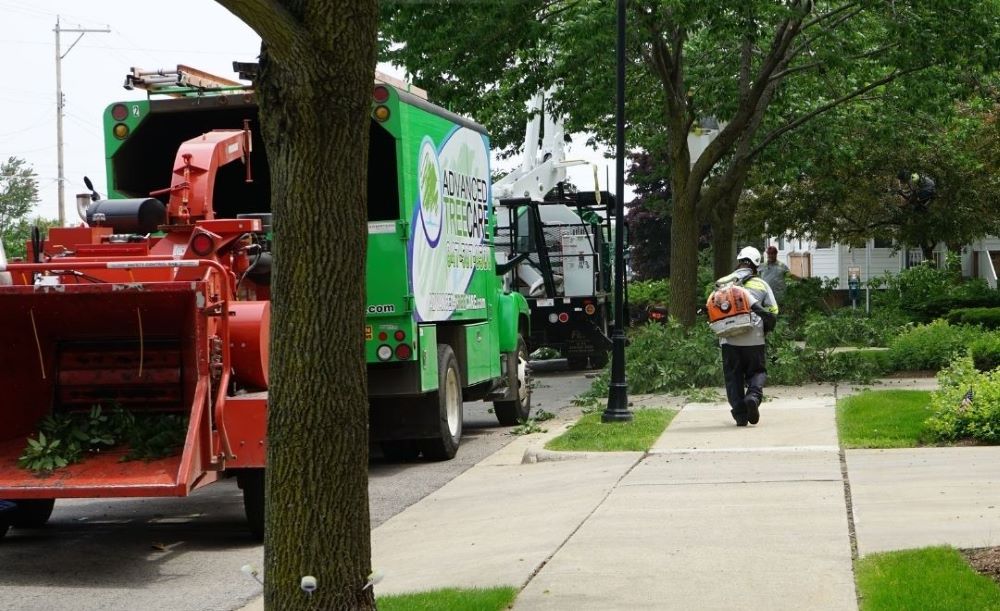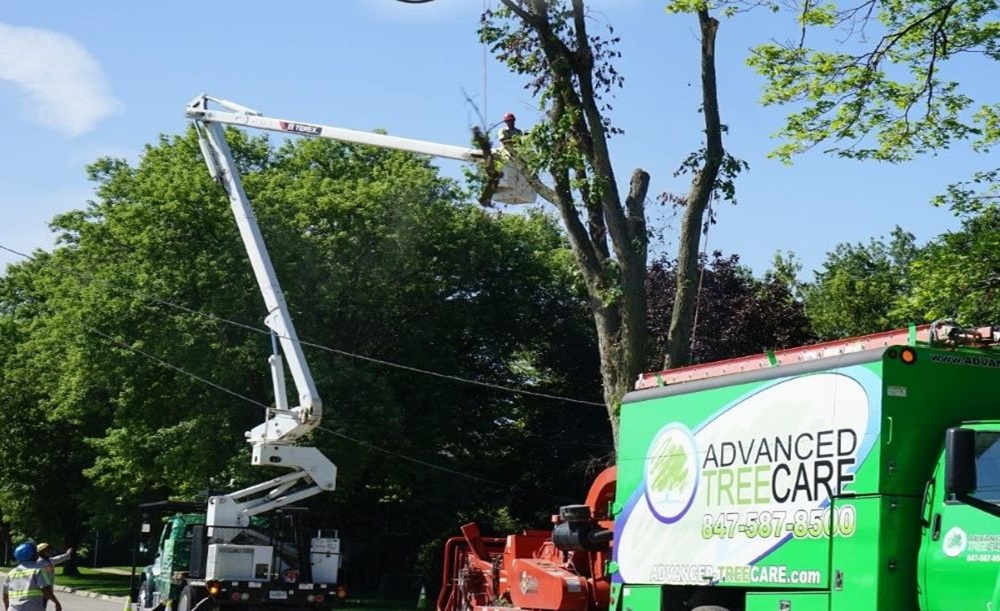It may be the most wonderful time of year indoors…but outdoors, it’s another story.
Winter presents a unique set of challenges when it comes for caring for your trees. Harsh weather, snow and ice, and dry conditions can all take their toll. Being prepared and proactive can help you protect your trees throughout the winter months. This article examines six common winter tree care problems and provides practical solutions, so you’re ready before the snow flies.
Solving common winter tree care problems
From proper hydration during winter to warding off ice damage, here are solutions to handle this season’s most common winter tree care problems.
Problem #1: Winter Desiccation
Desiccated is another word for dry. If you’ve ever noticed the skin on your hands cracking during the winter, you know firsthand (go on, groan) that winter in the Midwest is truly a dry season. And the further the temperatures plunge, the drier it gets. Proper hydration is crucial for your trees, especially for evergreens. After a dry summer like the one we have had, it’s especially important to ensure your trees are well-watered.
Solution: Winter Watering
Water your trees deeply before the ground freezes to ensure they have access to moisture throughout the winter months. Consider using anti-desiccant sprays on evergreen trees and shrubs to help reduce moisture loss through needles. Anti-desiccant sprays create a protective barrier that can help to lessen water evaporation.
Problem #2: Snow and Ice Damage
Ice storms and heavy snowfall can wreak havoc on your trees, costing them life and limb—literally. Help your trees avoid this fate with some proactive pruning.
Solution: Proper Pruning
Prune trees during their dormant period (winter) to remove weak, diseased, or dead branches. These can all spell danger under the weight of snow or ice. If you have larger, older trees on your property, inspect them for weak branch unions. These can be cabled or braced during the winter months for added support for heavy or weak limbs.
Problem #3: Salt Damage
Most communities heavily salt the roads during the winter. It’s easy to see why: safety comes first. All that salt, though, can be very bad for trees. Parkway trees are especially vulnerable to salt damage, as frequent snowplowing tosses drifts onto their trunks and road systems. Look for signs of damage on the tree’s road-facing side to confirm salt exposure (and its effects).
Solution: Minimize Salt Exposure
A couple of easy steps can help you protect your trees, including those on the parkway. First, apply a layer of mulch around your trees before it snows to create a barrier between the soil and the salt-laden snow. This reduces the risk of salt damage.
Whether or not you have mulched, take some time to shovel large snowdrifts of salt-laden snow away from your trees. This can help to reduce the salt exposure.
Finally, if you are planning landscaping, opt for tree species that are tolerant of salt exposure. These include common juniper, eastern red cedar, mugo pines, and longleaf pines. These trees are hardy in zones 3 to 7 (northern Illinois is located in Zone 5A) and are also more drought-resistant than other species.
Problem #4: Frost Cracks and Sunscald
While you are cozy inside, your trees are outside taking on the full force of the elements, all season long. Young trees are susceptible to frost damage. Trees of any age and type can be affected by sunscald, which is damage to the bark caused by rapid temperature fluctuations between day and night.
Solution: Trunk Protection
Wrap the trunks of young trees with burlap or commercial tree wraps. These wrappings protect them from rapid temperature changes that can contribute to frost cracks. Consider using reflective tree guards to counter sunscald and protect trees’ bark.
Problem #5: Pest Infestations
Winter’s sparser foliage provides a great opportunity for you to more closely inspect your trees and shrubs. Look for eggs, larvae, or nests that indicate a pest infestation, as these signs might be more visible during the winter months.
Solution: Early Detection and Treatment
If you suspect an insect or rodent infestation, early treatment can mean the difference between saving and losing a tree and containing a spread. Consult a certified arborist for diagnosis and treatment options.
Problem #6: Deer and Rodent Damage
Winter is a lean season for all animals. Rodents and deer might turn to your trees as a source of calories during winter’s coldest weeks.
Solution: Take Protective Measures
Prevent nibbling of branches and trunks during the lean months by installing physical barriers like tree guards or netting. You might also apply natural or commercial repellents to deter deer. These create an unpleasant taste or smell. Common effective natural repellents include scented bar soap, coffee grounds, chili pepper, and herbs like mint or chives.
Winter weather can be harsh—on us and on our trees—but you can ensure the health and well-being of your trees during the dormant season. With a little preparation, you can counter the effects of desiccation, salt exposure, and opportunistic deer dining, so your trees look beautiful when spring rolls around.
Looking for guidance on solving common winter tree care problems? We can help. Advanced Tree Care combines top-notch equipment, cutting-edge technology, and well-trained staff to provide emergency tree removal and tree maintenance services. With a presence in nine counties and two states, we work daily to provide unparalleled customer service, safety, and efficiency—as well as the expertise to beautify your landscaping and community. Advanced Tree Care isn’t just our name—it’s also our purpose!


